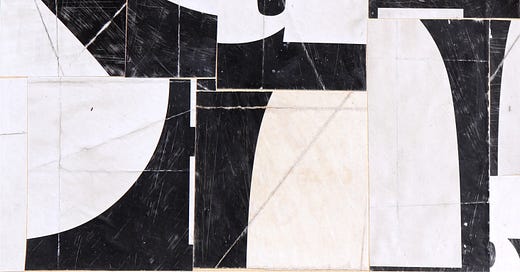The Many Lives of Artists
The image of the artist is often reduced to a stereotype—the starving visionary, the commercial sellout, the tortured genius, the weekend hobbyist. But in truth, there are endless ways to be an artist. The creative impulse moves through people differently, shaped by personality, circumstance, culture, and desire. No single path defines the whole. What matters is finding your way.
Here are a few of the many paths I’ve seen, lived, or admired—and the value each holds:
The Private Artist
Some artists create entirely for themselves. Their work is intimate, personal, never intended for public display. They paint, draw, build, or write in solitude—not for applause but because it helps them understand themselves and their world. Their studio may be a journal, a shed, a kitchen table. Their audience may be one trusted friend. Their work has value not because it’s seen, but because it’s felt—deeply.
The Spiritual Artist
For some, art is a form of prayer, meditation, or communion with something greater. The process matters more than the product. These artists may use ritual, repetition, or natural materials. They may draw from religious traditions, mystical experience, or intuitive practice. Their goal isn’t mastery—it’s presence. Their studio becomes a sacred space where something unseen is given form.
The Hobbyist
Some artists simply love to make things in their free time. They might hold full-time jobs in other fields, and art is their way to relax, explore, or recharge. They may take workshops, join groups, or post casually online. There’s no pressure to “succeed”—just the joy of engaging. This is one of the most life-affirming paths, and one that keeps creativity alive in all kinds of people.
The Professional
The professional artist treats their work as their career. They commit to a studio practice, develop a body of work, and engage with galleries, collectors, or markets. They learn how to present themselves, build relationships, and sell consistently. This path requires discipline, self-management, and business skills—but at its best, it allows the artist to live entirely from their creative work.
The Outsider
Some artists don’t fit into any system. They may be self-taught, working in unconventional ways, outside the art world’s norms or expectations. Often their work is raw, powerful, visionary—driven by internal forces rather than external praise. Outsider artists remind us that creativity doesn’t need credentials. It doesn’t need permission. It just is.
The Cultural Custodian
These artists see their work as part of a larger tradition—craftspeople, storytellers, ceremonial makers. They may be bearers of ancient techniques, symbols, or forms. Their art keeps memory alive, binds community, and offers continuity in a world of constant change.
No single path is the right one. And most artists walk a combination of these routes at different points in life. You may begin as a hobbyist, move into a spiritual practice, then shift toward public exhibitions. Or you may never share your work at all—and still, your practice might carry deep meaning and power.
The important thing is to honor where you are. Don’t force yourself to fit a model that doesn’t suit you. Don’t measure your success by someone else’s path. Your art will find its shape, its rhythm, its meaning—if you give it the freedom to do so.
Questions from Belinda Luscombe
For my journal, I collect prompts, things to respond to. If I am sitting in front of a black page I really don’t have much to say. I am perfectly happy being quite. Some of the prompts I have been collecting are interview questions that interviewers have asked artists. A good question shouldn’t go unanswered. The following are a few questions from BELINDA LUSCOMBE, an editor at large at TIME Magazine, that she asked to somebody else.







All of these definitions are great Cecil. There are times I am each one, sometimes all at once. We are the sum total of all our experiences! ♥️✂️
All good definitions if one needs or wants to define themself or others. I shy away from definitions and just prefer: Artist. But I suppose with so many who need to know exactly what kind of artist someone is......whatever. I don't subscribe to having to define myself by pronouns, nouns, politics, symptoms, disease, etc. Keep 'em guessing. I'm not filling out any forms so I don't need to advertise. Just being and doing is my thing. It took me some years to feel I deserved to call myself an Artist. And it's easy to judge others who call themselves that when we have all sorts of measures as to how WE define them as. For myself, I had to 'earn' that 'right' to define myself as an artist but the term "Artist" is so loosely used on all sorts of individuals who dabble in doing "art".